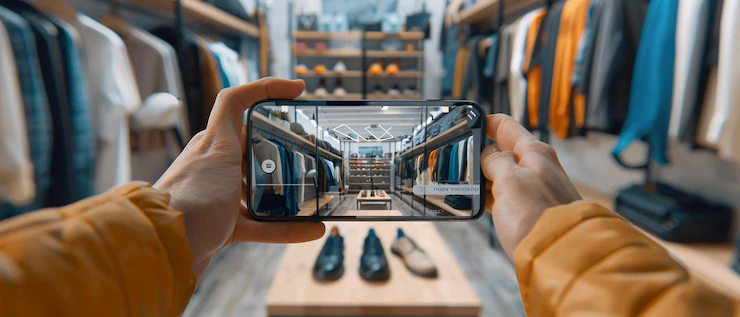In recent years, augmented reality (AR) has emerged as a transformative force in the marketing landscape, offering brands an innovative way to engage consumers like never before. Unlike virtual reality, which creates entirely immersive digital environments, AR overlays digital elements onto the real world, allowing users to interact with products and experiences in a context that feels familiar and relatable. This unique blend of the digital and physical has captured the imagination of brands and consumers alike, revolutionising how marketing strategies are conceived and executed.
One of the most compelling aspects of AR is its ability to create memorable and engaging experiences that resonate with audiences. Brands are no longer limited to traditional advertising methods; instead, they can create interactive experiences that encourage consumers to participate actively. For instance, Australian beauty brand L’Oréal introduced an AR feature in its app that allows users to try on different makeup looks virtually. This innovative approach not only enhances the shopping experience but also empowers consumers to make more informed decisions, leading to increased satisfaction and reduced return rates. Such applications highlight how AR can bridge the gap between the digital and physical realms, providing a seamless experience that enhances customer engagement.
Retail giants have also recognised the potential of AR to revolutionise their in-store experiences. IKEA, for instance, has developed an app that lets customers visualise how furniture will look in their homes before making a purchase. By simply pointing their smartphone at an empty space, users can see a virtual piece of furniture in their actual living environment. This capability not only aids in decision-making but also creates a sense of excitement and connection with the brand. For Australian consumers, this means they can make purchases with confidence, knowing that what they see on screen can be realised in their homes.
Beyond retail, AR is making significant strides in the tourism and hospitality sectors. Destination marketing organisations are increasingly using AR to enrich visitors’ experiences. Imagine walking through the stunning landscapes of the Australian outback while using your smartphone to see historical figures and events unfold right before your eyes. This blending of history and reality can deepen a tourist’s understanding and appreciation of the places they visit. For example, apps that provide AR-guided tours of iconic locations, such as the Sydney Opera House, can bring stories to life, enhancing the overall experience for both local and international visitors.
Moreover, AR can foster a sense of community and connection among consumers. Brands can create interactive campaigns that encourage social sharing and collaboration. A notable example is the Pokémon GO phenomenon, which not only captivated players but also drove foot traffic to businesses that hosted in-game events. Australian cafes and shops reported increased patronage during special AR events, demonstrating how gamification combined with AR can be a powerful marketing tool. Brands that harness this potential can build stronger relationships with their audiences, turning casual consumers into loyal advocates.
As technology advances, the barriers to entry for implementing AR in marketing strategies continue to diminish. With the proliferation of smartphones equipped with advanced cameras and AR capabilities, even small businesses can leverage this technology to engage their customers in meaningful ways. Creating an AR experience no longer requires a massive budget or extensive technical expertise; there are numerous user-friendly platforms available that allow brands to develop their AR campaigns quickly and effectively. This democratisation of AR technology opens up exciting possibilities for businesses of all sizes to innovate and stand out in a crowded marketplace.
However, as brands embrace AR, they must also consider the importance of thoughtful implementation. An effective AR experience should not feel gimmicky or intrusive; rather, it should enhance the brand narrative and provide genuine value to consumers. Brands need to be mindful of user experience, ensuring that AR applications are intuitive and seamlessly integrated into the overall marketing strategy. By focusing on authenticity and meaningful engagement, companies can avoid overwhelming consumers and instead foster positive interactions.
In conclusion, augmented reality is undeniably a game-changer for immersive brand experiences. Its capacity to blend the digital and physical worlds offers brands a powerful tool for engaging consumers in ways that were previously unimaginable. As more businesses recognise the potential of AR, we can expect to see a surge in innovative applications that enhance customer experiences across various industries. For Australian brands looking to stand out, embracing augmented reality not only provides a competitive edge but also paves the way for deeper connections with consumers, ultimately reshaping the future of marketing in an increasingly digital world. The future is bright for brands willing to explore the uncharted territories of augmented reality, and those who do may just find themselves at the forefront of a marketing revolution.







Comments are closed.